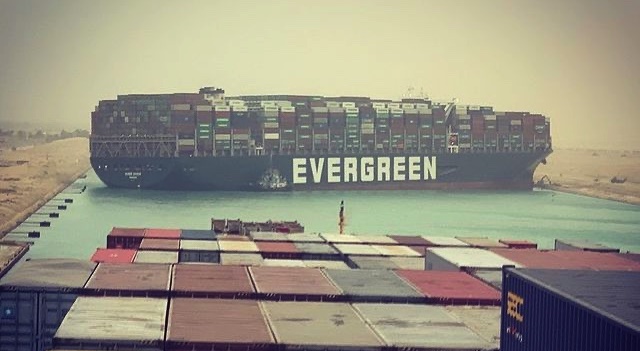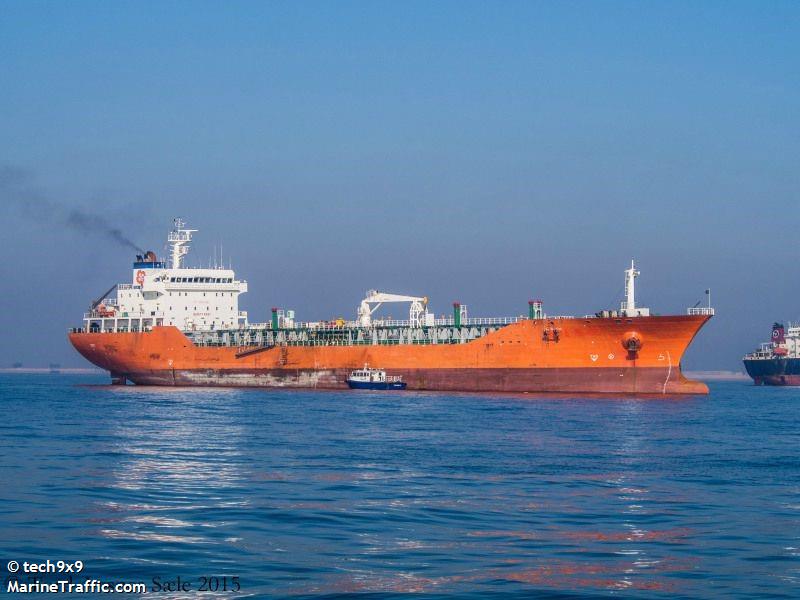Ever Given was travelling too fast: SCA

In the ongoing tit-for-tat between the Suez Canal Authority and Japanese owner Shoei Kisen over who was to blame for the blockage on the key waterway in March, the Egyptians have hit back.
Interviewed by Reuters, SCA chairman Osama Rabie said Shoei Kisen’s 20,388 teu Ever Given was travelling too fast through the canal and the size of the vessel’s rudder also contributed to the accident.
The two sides are in a fierce battle over compensation with the SCA arresting the Panamanian-flagged ship and demanding hundreds of millions of dollars for the damage done during the high profile six-day blockage of the canal two months ago.
Rabie said the captain could have held the ship back.
“He knows the capabilities of his ship … so he can come and say, ‘I don’t want to enter, I feel the weather is not appropriate,” Rabie told Reuters, adding that the ship was travelling too fast and the rudder was not aligned.
“There were a lot of technical faults, among those was that the rudder’s size was not appropriate to the size of the ship.”
For its part, Shoei Kisen has said the SCA was responsible for the 400 m long vessel grounding in the first place.
Lawyers for Shoei Kisen said last week the ship should have been accompanied by at least two tug boats suitable for the ship’s size for the transit during stormy conditions.
The SCA has said that Shoei Kisen is willing to pay $150m in compensation, something Rabie has dismissed as too low. Initially the SCA was seeking $916m in damages, something that has been dropped repeatedly in recent weeks as lawyers for both sides haggle over the release of the ship anchored in the Great Bitter Lake.
Another court hearing relating to the Ever Given and compensation is due tomorrow.

 was travelling too fast through the canal and the size of the vessel’s rudder also contributed to the accident.
was travelling too fast through the canal and the size of the vessel’s rudder also contributed to the accident.
SCA – Straws, Clutching At?
Speed – under control of Suez pilots!
You nailed it well. Suez canal pilot should be hold responsible because he/she handle the ship during transit ..
A pilot goes on a ship to help the captain to navigate a stretch of a water body. (river or canal)
The captain is always responsible for his ship.
The pilot recommend, the captain has the last word.
In this case, he did not require tug boats or agreed not to use them for the passage.
He also had to agreed the speed increase.
As able seaman, I have worked with pilots many years.
I have never heard of a ship’s rudder being less powerful or efficient the faster it travels through the water. Quite the obverse. The size of the rudder is arrived at through tank testing and established design criteria. The ship was in class, passed inspections required by her (admittedly questionable) flag of convenience. and in other design criteria is probably a well-built ship. The canal are obviously clutching at straws. The only room for speculation is if there is some relationship between ship’s speed and a narrow channel l’m not aware of. It seems mechanical defect has been ruled out as a cause. So it was either blown ashore by high winds and/or pilots error. Somehow l doubt the last. This brings great pressure on the Master as to whether he will go through or not in the windy season. The pressures from the ship owner and cargo interests will be huge. It’s one of those “damned if you do/damned if you don’t” type of decisions. Or will the canal be closed to high-sided ships in the windy season, which will impact it’s reputation. Escort tugs are not really an answer. They could not keep up with her 13.5 knots transit speed(to enhance rudder power), could not come to bear on her at those high speeds. Finally, the tugs must follow the ship in order to deploy on the side closing with the canal bank. It is a knotty problem
Transit the canal on a RORO VESSEL,pilot reading the paper,got pic to prove it.
Transit the canal on a RORO VESSEL,pilot reading the paper,got pic to prove it.
Black box ont vessel should give answers.
So according to SCA boss the designers, builders/shipyard, Owners technical team and American Bureau of Shipping- a top notcth Class Society -member of IACS.- all those people had no idea what kind of rudder should Ever Given be fitted with.????? !
And SCA boss has declared it as INAPROPRIATE ?? !!
WHAT A CROCK OF NONSENSE.
How come that SCA, while issuing the SC tonage certificate and having access to all blueprints necessary to establish VESSEL FITNESS for present and future canal crossings , how come they did not notice the vessel had INAPPROPRIATE RUDER?
Or may be they were incompettent to notice such terrible mistake or may be they were not DILLINGENT ENOUGH to find out????
In early 1990s I was Master on Kuwait Oil Tankers M.V. “Hadiyah”, 75,029 gross, 250m x 43m. Engine power 11,200 HP, ok for straight line but no use in manoeuvring and never ever got full astern power. For Suez Transits, SCA always wanted me to go on the buoys at Port said or into the anchorage at Suez. I always refused due to the power limitations of the ship and usually had high ding dong with SCA but stood my ground. On one occasion, due to company pressure I had to do second convoy Southbound and moor in the By Pass. Told Pilot to have tug connected aft for mooring, not done. Wind got up and ended up both anchors down and as much astern power as I could get with bow into the bank to stop the ship. Strangely, after this experience, I never had any problems again with SCA about transits on “Hadiyah”. Far too many times I had to adjust speeds contrary to “Pilot’s Instructions”. Business of the size of the rdudder is laughable.
Pity the people who might never ever receive their cargo.
SCA is now working on designing a pyramid shaped rudder that will be a requirement for any vessel seeking to pass through the canal.
The pilot I s completely responsible. The master does what he tells him in these sca controlled waters. They are trying to escape there incompetence.
I think SCA is ripping off with big demand on Ever Green co . Poor information .
SCA demand of $916m was too high they should accept the offer $150 and release the ship for sale of their reputation
I’m an active ship master for 21yrs on car carrier vessels and have transitied the SC countless times. Car carrier ships have large windage areas and is highly susceptible to wind leeway effect. Container ships are similar. At times, due to wind, it can be necessary to steer up to 10 to 15 deg off course to make good a required course over ground. In the canal such a situation will require the full concentration of the pilot and master continously adjusting the ships heading as the wind usually blows in gusts. A good experienced helmsman should be on the wheel. A late correction of heading can easily result in the wind taking the ship very quickly. Which is why canal transits should only be done only in wind/wx permitiing conditions. However delaying a transit always leads to a pile up of waiting ships. And so they always try to avoid that by permitting transit even when theres wind. And plus masters are always pressured into keeping port schedules and ETA. This is a bad culture as it causes the master to place priority on ETA instead of safety first.
Additionally, ships have grown bigger and infrastructure has not caught up. The canal should be enlarged. A shoulder should be made along its length for emergency anchoring. Either that or ship size should be limited.
Mr Klassen,you exactly right